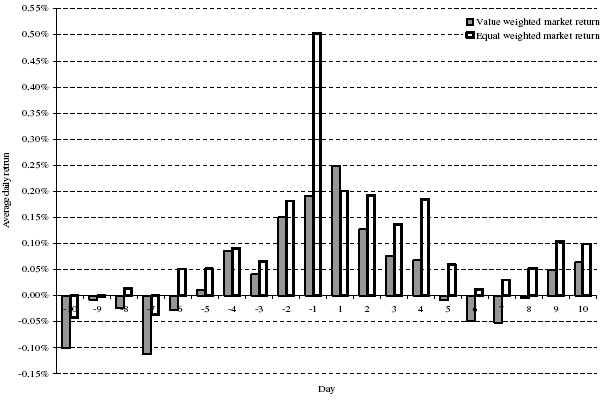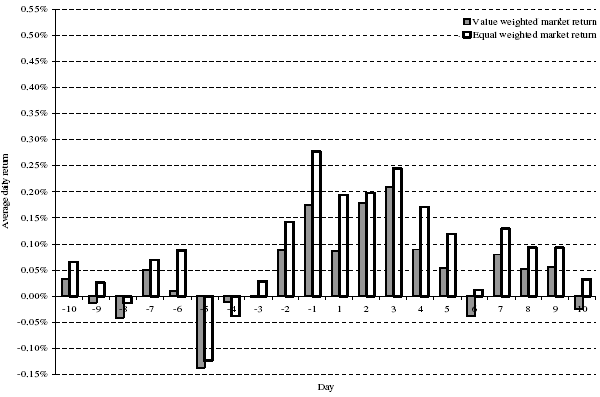Do stock prices move systematically at the turn of calendar months? In the July 2006 draft of their paper entitled “Equity Returns at the Turn of the Month”, Wei Xu and John McConnell examine equity returns from the beginning the last trading day of one month through the first three trading days of the next month. Using daily returns for a broad range of stocks across exchanges over the period 1926-2005 (with focus on the segment 1987-2005), they conclude that:
- All excess market returns occur during a four-day turn-of-the-month interval. Since the beginning of 1987, the average daily value-weighted (equal-weighted) excess market return during the turn of the month is 0.14% (0.24%), compared to -0.01% (0.04%) during the other 16 trading days of the month.
- Return variability (standard deviation) is no higher during the turn of the month than during other days.
- The turn-of-the-month effect is not confined to small or low-priced stocks, although small-capitalization stocks have especially high returns on the last day of the trading month.
- The turn-of-the-month effect is not confined to turns of the year (December to January) or turns of calendar quarters.
- The turn-of-the-month effect is not confined to U.S. markets. Stock markets in 30 of 34 other countries examined also exhibit the effect.
- Neither Treasury instruments nor corporate bonds exhibit significant turn-of-the-month effects.
- There is no good explanation for the turn-of-the-month effect. Neither “payday” nor risk-factor nor behavioral explanations work. Neither trading volume nor net flows to mutual funds are higher during the turn of the month than during other days.
The following chart, taken from the paper, shows the average daily value-weighted and equal-weighted market returns for the last 10 trading days and the first 10 trading days of the month over the period 1987-2005. Day -1 is the last trading day of the month. Day +1 is the first trading day of the month. The chart demonstrates the concentration of returns around the turn of the month.

The next chart, also from the paper, shows the same results over the longer preceding period of 1926-1986. The chart demonstrates that the turn-of-the-month effect is long-standing.

In summary, the significant concentration of excess stock market returns around the turns of calendar months is a long-standing and persistent effect.